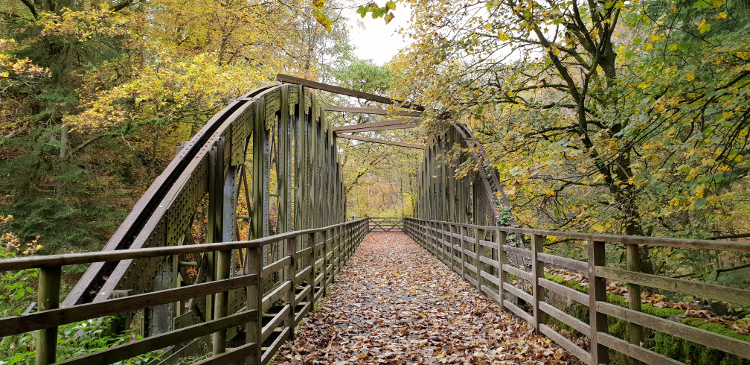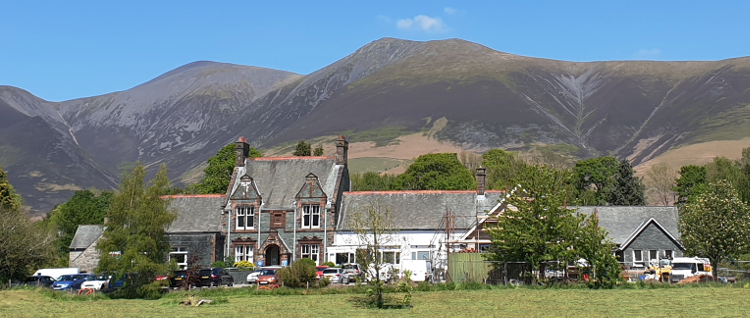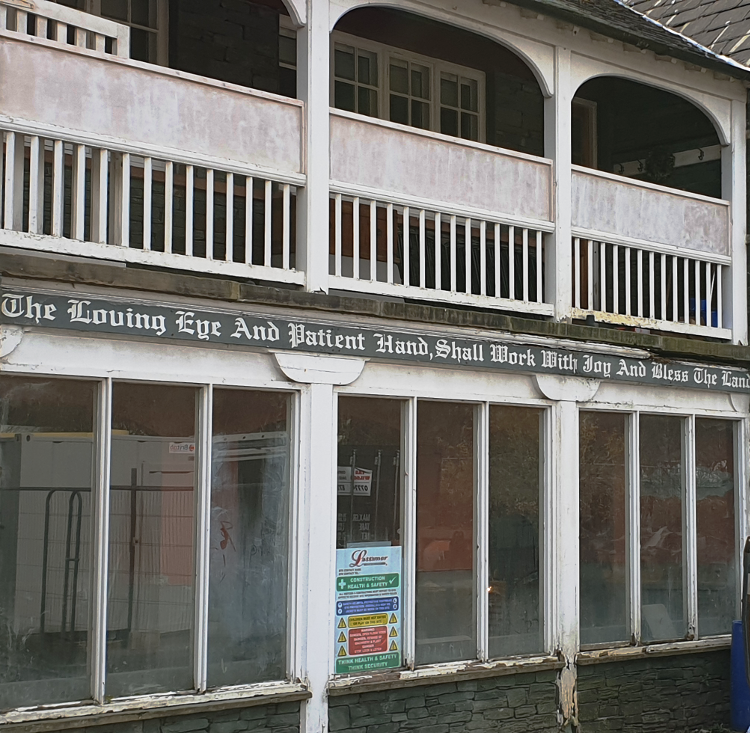Keswick's Hidden Gems
Add a little extra to your Lake District walking holiday and enjoy all the secret highlights of Keswick.
Keswick's Hidden Gems
https://www.contours.co.uk/keswicks-hidden-gems
by Beth Pipe
Keswick is one of the most popular and visited Lake District towns. Throughout the summer months, the streets buzz with visitors enjoying everything the town has to offer. It is a Mecca for those seeking adventure outdoors, with Skiddaw and Blencathra looming large over the myriad of local shops. Busy though it is, much of the crowd will miss the best kept secrets of the town, some slap bang in the centre and others just a short walk away.
The old railway line makes for a perfect gentle stroll to warm up for — or cool down from — a more strenuous hike. To find the start, head through the town and up past Fitz Park, the museum and leisure centre. At the back of the Keswick Hotel you’ll find the old platform perfectly preserved, as if expecting the next train at any moment.
From there, the walk is currently just 1.5 miles as a result of bridges being washed away during Storm Desmond in 2015. There’s a plan to replace them and re-open the entire route but, as with most of these things, finances are an issue.

The line originally connected Cockermouth to Penrith and first opened to passengers in January 1865. Sadly it closed a little over 100 years later, with the stretch west of Keswick closing in 1966 and the remainder in 1972.
I sincerely hope you never need to visit the hospital for medical reasons, but even if you’re fit and well, it’s worth taking a westward wander along the River Greta, through Fitz Park and out towards Great Crosthwaite.

Its official title is The Mary Hewetson Cottage Hospital, and it was donated by Henry Hewetson in memory of his sister, Mary. Henry and Mary had been born in the town before moving away to make their fortunes elsewhere, but they never forgot their old home town.
In the late 19th century, the town was in desperate need of medical facilities as the opening of the railway had brought in increased numbers of visitors and residents. The hospital first opened its doors in 1892 and continues to offer a small number of beds, plus a walk in treatment centre for minor injuries and ailments.
.png) The Shop with the Stained Glass Windows
The Shop with the Stained Glass WindowsTucked away in Packhorse Court is a shop which, from the outside, looks like many other gift shops — an assortment of Harry Potter memorabilia fills one of the windows and the inside is an Aladdin’s Cave of treasures, ornaments and nick-knacks — but explore a little further and you’ll discover a wonderful hidden secret.
The shop, Poet’s Interiors, occupies the site of what was once the dining room of The Royal Oak Hotel and, during that time, it was frequented by many of the local literary greats: Wordsworth, Ruskin, Coleridge and Southey.
A series of magnificent stained glass windows were created to commemorate these honoured guests and now they line the walls of this curious and fascinating shop.
If the weather turns and you don’t fancy heading outdoors, then a visit to this historical gem is an absolute must. In an era of multiscreen cinemas with sticky floors and overinflated prices, the Alhambra in Keswick is a reminder of how cinema visits used to be.
It was built in 1913 and has been in continuous operation for over 100 years. When it opened, it showed silent films accompanied by an organist but, throughout the years, it has kept pace with the evolution of Hollywood and today offers all the latest blockbusters and live satellite screenings of major events.
Sir John Hurt, Dame Judi Dench, Ken Loach and a range of other film greats all sent personal messages to mark the cinema’s centenary.
 Take a walk out of town along the main road to the west and, just over Greta Bridge, you’ll find a curious building on your left. Currently undergoing renovations, this is the site of the School of Industrial Art.
Take a walk out of town along the main road to the west and, just over Greta Bridge, you’ll find a curious building on your left. Currently undergoing renovations, this is the site of the School of Industrial Art.
The school was founded by Canon Rawnsley in the late 19th century, with the aim of providing local people with skills and activities during the long winter months. The school gained a reputation for producing high quality decorative pieces and remained open right up until 1984, when a drop in sales left it unable to fund itself. Original items produced by the school are highly collectable and can still be found on internet auction sites.